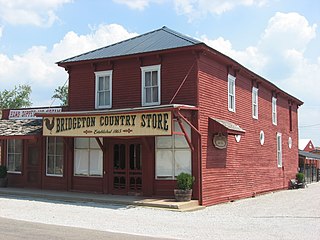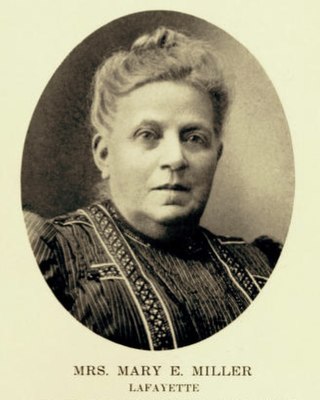Related Research Articles

Plymouth County is a county located in the U.S. state of Iowa. As of the 2020 census, the population was 25,698. The county seat is Le Mars. Plymouth County was named after Plymouth, Massachusetts.

Le Mars is the county seat of Plymouth County, Iowa, United States. It is located on the Floyd River northeast of Sioux City. The population was 10,571 at the time of the 2020 census. Le Mars is part of the Sioux City metropolitan area.

A grain elevator is a facility designed to stockpile or store grain. In the grain trade, the term "grain elevator" also describes a tower containing a bucket elevator or a pneumatic conveyor, which scoops up grain from a lower level and deposits it in a silo or other storage facility.

The LA engine is a family of overhead-valve small-block 90° V-configured gasoline engines built by Chrysler Corporation between 1964 and 2003. A replacement of the Chrysler A engine, they were factory-installed in passenger vehicles, trucks and vans, commercial vehicles, marine and industrial applications. Their combustion chambers are wedge-shaped, rather than polyspheric, as in the A engine, or hemispheric in the Chrysler Hemi. LA engines have the same 4.46 in (113 mm) bore spacing as the A engines.

Bridgeton is an unincorporated community and census-designated place in Raccoon Township, Parke County, in the U.S. state of Indiana. It is notable for its covered bridge, which was destroyed on April 28, 2005, by a fire set by an arsonist. A historically accurate reconstruction of the bridge was completed in October, 2006.

Isaac Sterling Struble was an American politician who was a four-term Republican Representative of Iowa's 11th congressional district. Serving from 1883 to 1891, the Plymouth County resident was a noted congressional opponent of plural marriage in the Utah Territory.

The Malvern Roller Mill, also known as Appel Mill and Malvern Milling Company, is a 19th-century grist mill located near the unincorporated village of Malvern, Illinois, in rural Whiteside County, north of Morrison, Illinois, United States. The original mill on the site, built by 1853, was destroyed by a flood and the present mill was erected in 1858. The mill's first owner was William P. Hiddleson who operated the mill until he sold to Benjamin Hough in 1871. The mill changed hands over the years until it landed under the control of George Appel in 1892. The Appel family closed the mill in 1942 but it remained in their family until 1985. The Malvern Roller Mill was added to the U.S. National Register of Historic Places in 1995.

The Caledonia Mill was a historic mill building located in Caledonia, Ontario, Canada. Built in 1846, it is a heritage property under the Ontario Heritage Act. It was the last timber-frame water-powered mill along the Grand River in Ontario. In 2018 the mill was dismantled by Riverside properties and was rebuilt as an office complex.

Benjamin Brayton Knight (1813–1898) was a New England industrialist and philanthropist, who was a partner with his brother Robert Knight in the B. B. & R. Knight Company and was one of the largest textile manufacturers in the world when he died in 1898. Knight co-founded the large and famous brand, Fruit of the Loom.
Edwin A. Dalton was an American college football player, coach, and banker. He was the first paid football coach for the Iowa Hawkeyes football team, holding the post for ten days in October 1892. He served as the president of the First National Bank in Le Mars, Iowa for many years until his retirement in 1932.

Edward Phelps Allis was an American businessman who founded the Edward P. Allis Company, a manufacturer of milling and mining equipment, steam engines, and other large-scale capital equipment. He was a notable ideologue in the Greenback Movement, running for governor of Wisconsin as a candidate of the Greenback Party. About a decade after his death, his company merged with others to form the Allis-Chalmers Manufacturing Company. In 1883, Allis was elected a fellow of the American Society of Civil Engineers.

Henry Ford's Village Industries were small factories located in rural areas of Michigan. Ford developed his Village Industries in part to provide farm workers a stable source of income during the winter months.
The Orange Grove Flour Mill was a flour mill established in 1856. It was one of the leading flour mills in the Mid-Atlantic states until it was destroyed in a fire in 1905.

Grimes Mill was located at 600 N. Church St. in Salisbury, North Carolina. It was built in 1896 as a flour and feed mill. It stayed active until 1982. The Historic Salisbury Foundation bought it that year and later turned it into a museum. It was listed on the National Register of Historic Places and was the only roller mill museum in North Carolina. The site was destroyed by fire on January 16, 2013.

John Stevens was a miller and inventor who lived in Neenah, Wisconsin. His inventions in flour milling revolutionized the process, leading to large-scale shifts in wheat-growing regions, and to the predominance of particular milling companies and mill-equipment manufacturers. Today Patent flour is still referred to due to Stevens' patents.

Rhodes Mill is a historic structure located in Fertile, Iowa, United States. It was listed on the National Register of Historic Places in 1978. William Rhodes moved to Fertile Township in Worth County, Iowa from Ontario in 1856. The following year he opened a saw mill along what is now known as the Winnebago River. During the American Civil War he enlisted in the 32nd Iowa Infantry. After he was discharged in 1865 the town of Fertile grew around his mill. Iowa's wheat production increased after the war. Rhodes built a flour mill on the same site in 1868. It had a capacity of 50 barrels of flour per day, and by 1884 he was doing around $10,000 worth of business a year. He and his son remained in business until 1918.

Mary E. Miller (1843–1921) settled in the Territory of Colorado in 1863 with her husband, Lafayette Miller. After her husband died, she founded the town of Lafayette, Colorado, named for her husband. Miller was called the "Mother of Lafayette. She was the first woman bank president in the United States, a philanthropist and an astute businesswoman.

The Archer Daniels Midland Wheat Mill was a plant in Chicago's Fulton Market District. The complex included brick loft buildings, a grain elevator, and silos. The oldest buildings in the complex were built in 1897 and were designed by William Carbys Zimmerman and John J. Flanders. It originally served as Eckhart & Swan's wheat and rye mill.

Dunham's Mill, also known as Parry's Mill, is a historic building located at 7 Lower Center Street in Clinton, New Jersey, United States. The gristmill was in operation from 1837 to 1952. It was added to the National Register of Historic Places on April 15, 1982, for its significance in commerce and industry. In 1995, it was also listed as a contributing property of the Clinton Historic District. It shares the Clinton Dam across the South Branch Raritan River with the David McKinney Mill on the other side of the river. Since 1952, it has been home to the Hunterdon Art Museum, described by an art critic as the "most charming and picturesque" museum in the state.

The Columbia Historic District is a neighborhood in Cedarburg, Wisconsin, that is listed on the National Register of Historic Places. At the time the district was listed on the register, its contributing properties included 128 historic homes, one church, and eighty-seven historic outbuildings, including garages and barns, all constructed between 1844 and 1938. The district also contained several dozen buildings that do not contribute to the historic district, including modern homes from the post-war era as well as modern garages and other additions to historic properties.
References
- 1 2 Linda Ewin Ziemann (2009). Plymouth County. Arcadia Publishing. p. 16. ISBN 978-0-7385-6083-0.
- ↑ History of the Counties of Woodbury and Plymouth, Iowa, Including an Extended Sketch of Sioux City, Their Early Settlement and Progress to the Present Time; a Description of Their Historic and Interesting Localities; Sketches of the Townships, Cities and Villages; Portraits of Some of the Prominent Men, and Biographies of Many of the Representative Citizens. A. Warner & Company. 1890. p. 922.
- ↑ The Roller Mill. E.L. Burdick & Company. 1898. p. 179.